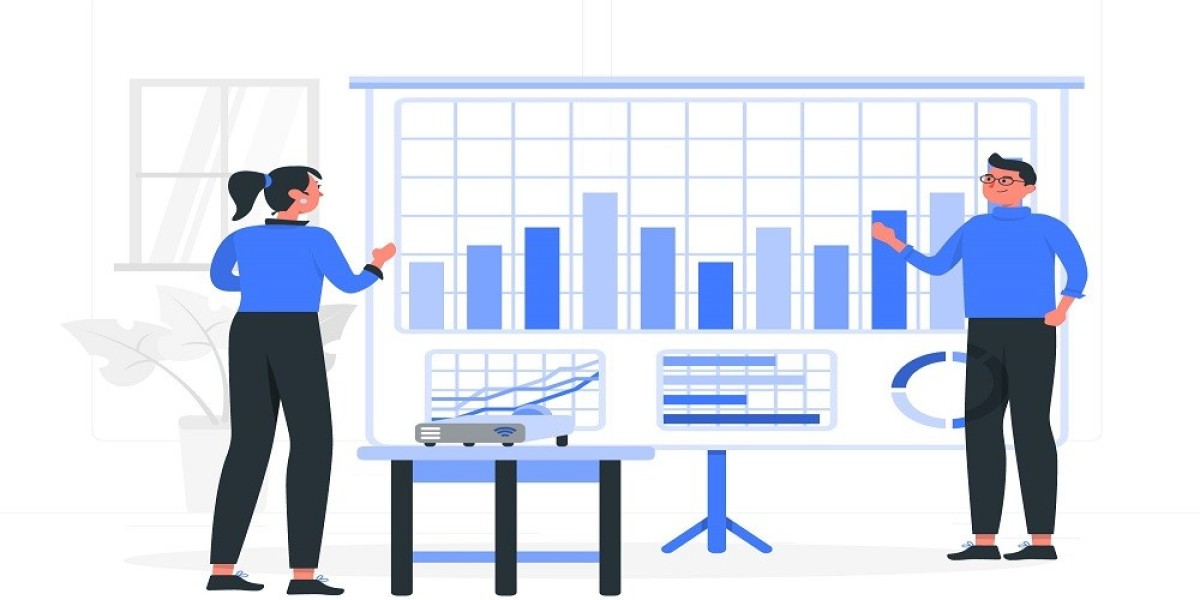Demand forecasting is essential for businesses aiming to optimize their operations, manage inventory, and enhance customer satisfaction. Modern demand forecasting methods have significantly improved accuracy, helping companies predict future demand with greater precision. This blog explores how these advanced techniques contribute to better forecasting outcomes.
1. Advanced Statistical Methods: Leveraging Complex Algorithms
Advanced statistical methods use sophisticated algorithms to analyze historical data and predict future demand. These methods provide a deeper understanding of data patterns and improve forecast accuracy.
ARIMA Models: Use autoregressive integrated moving average models to capture different time series components.
GARCH Models: Model volatility and fluctuations in demand, improving predictions in unstable markets.
Kalman Filters: Filter noise from data and provide real-time forecasting updates.
Quantile Regression: Predict various quantiles of the demand distribution for more nuanced insights.
Structural Equation Modeling (SEM): Analyze relationships between multiple variables for better accuracy.
Wavelet Analysis: Examine data at different scales to detect hidden patterns.
Functional Data Analysis (FDA): Analyze data that varies over a continuum, such as time.
2. Machine Learning Techniques: Harnessing Data-Driven Insights
Machine learning techniques leverage vast datasets and complex algorithms to identify patterns and make predictions. These methods continuously learn from new data, improving accuracy over time.
Neural Networks: Model complex nonlinear relationships between variables.
Decision Trees: Use tree-like structures to make decisions and predict outcomes.
Random Forests: Combine multiple decision trees to enhance prediction accuracy.
Support Vector Machines (SVM): Classify data into categories for better predictions.
Gradient Boosting Machines (GBM): Enhance prediction performance using boosting techniques.
Reinforcement Learning: Train models to make decisions based on feedback.
Natural Language Processing (NLP): Analyze textual data for demand insights.
3. Real-Time Data Integration: Responding to Immediate Changes
Real-time data integration involves using up-to-the-minute information to adjust forecasts dynamically. This method helps businesses respond swiftly to changing market conditions.
Sensor Data: Gather real-time information using IoT devices.
Social Media Analytics: Monitor social media trends to predict demand spikes.
Web Analytics: Track online behavior to forecast demand changes.
Transaction Data: Use point-of-sale data for immediate insights.
Weather Data: Incorporate weather forecasts to predict demand variations.
Event-Driven Forecasting: Respond to events like holidays or promotions.
Dynamic Models: Adapt models in real-time based on incoming data.
4. Big Data Analytics: Uncovering Hidden Patterns
Big data analytics involves analyzing large and complex datasets to uncover hidden patterns and trends. This approach provides a more comprehensive view of demand drivers.
Data Mining: Extract valuable information from vast datasets.
Predictive Analytics: Use statistical techniques to predict future events based on historical data.
Cluster Analysis: Group similar data points to identify patterns.
Association Rule Learning: Discover relationships between variables in large datasets.
Time Series Analysis: Analyze time-based data to identify trends and seasonal patterns.
Sentiment Analysis: Gauge consumer sentiment through social media and reviews.
Anomaly Detection: Identify outliers and unusual patterns in the data.
5. Collaborative Forecasting: Engaging Stakeholders
Collaborative forecasting involves engaging various stakeholders in the forecasting process. This technique enhances accuracy by incorporating diverse perspectives and knowledge.
Sales and Operations Planning (S&OP): Align demand forecasts with business plans.
Collaborative Planning, Forecasting, and Replenishment (CPFR): Coordinate with suppliers and partners.
Cross-Functional Teams: Involve different departments in the forecasting process.
Supplier Collaboration: Work with suppliers to improve forecast accuracy.
Customer Collaboration: Engage customers to gain insights into future demand.
Feedback Loops: Continuously update forecasts based on feedback.
Consensus Forecasting: Reach agreement on forecasts through collaborative efforts.
6. Scenario Planning: Preparing for Multiple Futures
Scenario planning involves creating multiple forecast scenarios based on different assumptions. This method helps businesses prepare for various potential futures.
What-If Analysis: Evaluate the impact of different scenarios on demand.
Sensitivity Analysis: Assess how changes in key variables affect demand forecasts.
Contingency Planning: Develop plans for different potential outcomes.
Stress Testing: Test forecasts under extreme conditions.
Monte Carlo Simulation: Use random sampling to model potential outcomes.
Scenario Workshops: Engage stakeholders in developing and evaluating scenarios.
Strategic Planning: Integrate scenario planning into overall business strategy.
7. Bayesian Forecasting: Incorporating Prior Knowledge
Bayesian forecasting incorporates prior knowledge and updates predictions as new data becomes available. This approach adapts forecasts to changing conditions.
Bayesian Inference: Use prior distributions to update beliefs based on new data.
Markov Chain Monte Carlo (MCMC): Sample from probability distributions to make forecasts.
Bayesian Networks: Model relationships between variables using probabilistic graphs.
Hierarchical Bayesian Models: Combine data from different sources for more accurate predictions.
Dynamic Bayesian Networks: Update models dynamically as new data is received.
Empirical Bayes Methods: Estimate prior distributions from the data itself.
Bayesian Structural Time Series (BSTS): Use state-space models to forecast time series data.
8. Hybrid Models: Combining Multiple Techniques
Hybrid models integrate multiple forecasting techniques to leverage their strengths and mitigate their weaknesses. This approach often results in more accurate and robust forecasts.
Ensemble Methods: Combine predictions from different models to improve accuracy.
Mixed Methods: Use both qualitative and quantitative techniques for comprehensive forecasts.
Model Averaging: Average predictions from multiple models to reduce variance.
Hierarchical Models: Combine models at different levels of aggregation for better predictions.
Integrated Approaches: Incorporate machine learning with traditional statistical methods.
Adaptive Models: Update models dynamically based on new information.
Blended Learning Models: Combine supervised and unsupervised learning techniques.
9. Cloud-Based Solutions: Enhancing Flexibility and Scalability
Cloud-based solutions offer scalable and flexible platforms for demand forecasting. These solutions enable businesses to process large datasets and deploy advanced forecasting models with ease.
Scalability: Handle large volumes of data without compromising performance.
Flexibility: Adapt to changing business needs and data sources.
Cost Efficiency: Reduce costs by leveraging cloud infrastructure.
Accessibility: Access forecasting tools and data from anywhere.
Integration: Seamlessly integrate with other business systems.
Real-Time Updates: Automatically update forecasts with new data.
Collaboration: Facilitate collaboration among stakeholders through shared platforms.
10. AI-Powered Forecasting Tools: Revolutionizing Predictions
AI-powered forecasting tools leverage artificial intelligence to enhance the accuracy and efficiency of demand forecasts. These tools can process vast amounts of data and identify complex patterns.
Automated Forecasting: Use AI to automate the forecasting process.
Pattern Recognition: Identify complex patterns and relationships in data.
Predictive Maintenance: Predict equipment failures and maintenance needs.
Optimization Algorithms: Optimize inventory and supply chain operations.
Personalization: Tailor forecasts to specific business needs.
Scalability: Scale up forecasting capabilities with ease.
Continuous Improvement: Continuously improve forecasts through machine learning.
Conclusion: Embracing Modern Methods for Superior Accuracy
Modern demand forecasting methods offer a range of sophisticated tools and techniques that significantly enhance accuracy. By leveraging advanced statistical methods, machine learning, real-time data integration, and AI-powered tools, businesses can achieve more precise and reliable demand forecasts. These modern approaches enable companies to make informed decisions, optimize operations, and stay competitive in a rapidly changing market. As technology continues to evolve, embracing these advanced forecasting methods will be crucial for businesses seeking to maintain a strategic edge and drive sustainable growth.
Predict your sales volume and demand trends with our Artificial Intelligence-based SaaS platform visit: https://thousense.ai/
Source: https://bresdel.com/blogs/563211/How-Do-Modern-Demand-Forecasting-Methods-Improve-Accuracy








